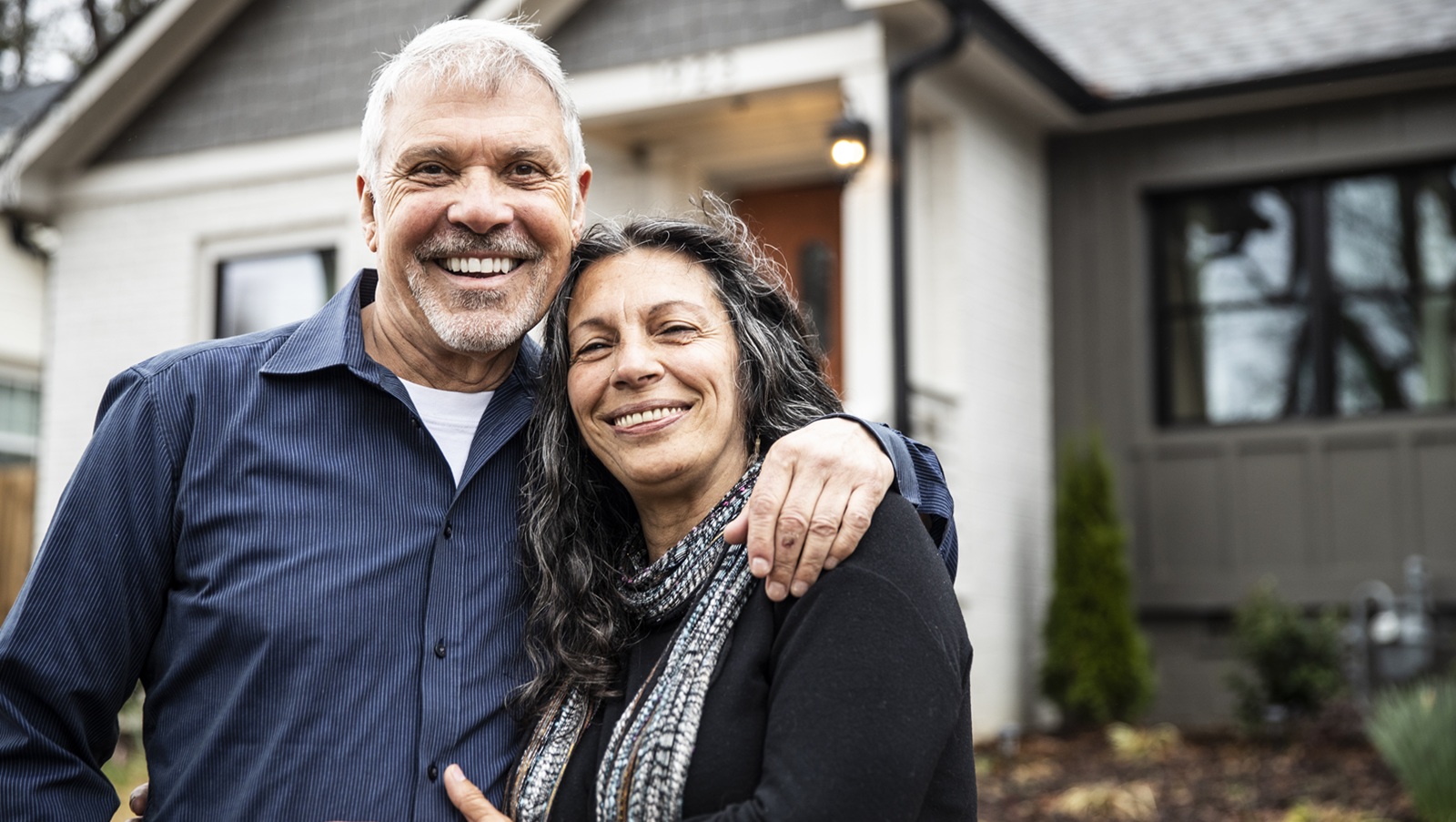Bill Miller Sees Better Times Ahead
If the once-revered Legg Mason fund manager is right about the future, his funds should continue their rebound.

From 1991 through 2005, Bill Miller was the toast of the mutual fund world. Over that period, the primary fund he manages, Legg Mason Value Trust (symbol LMVTX), beat Standard & Poor’s 500-stock index 15 consecutive calendar years, a record for consistency that no other fund could touch. The record ended in 2006, and after that the roof caved in on Miller and Value Trust shareholders. During the bear market that ran from October 9, 2007, through March 9, 2009, Value lost 72.0%, compared with a drop of 55.3% in the S&P 500. Miller’s newer fund, Legg Mason Opportunity Trust (LMOPX), lost a stunning 80.9%.
When the market turned in 2009, so did the fortunes of Miller’s funds. They ended the year with solid gains (Value returned 40.6% and Opportunity soared 83.1%). The 2010 results are mixed. This year through November 15, Value has advanced 3.6%, while Opportunity has returned 8.9%, compared with 9.3% for the S&P 500.
Now, with a couple of years separating us from the peak of the financial crisis, here are Miller’s thoughts about the economy and the stock market, and where he’s seeing the best opportunities:
From just $107.88 $24.99 for Kiplinger Personal Finance
Become a smarter, better informed investor. Subscribe from just $107.88 $24.99, plus get up to 4 Special Issues

Sign up for Kiplinger’s Free Newsletters
Profit and prosper with the best of expert advice on investing, taxes, retirement, personal finance and more - straight to your e-mail.
Profit and prosper with the best of expert advice - straight to your e-mail.
KIPLINGER’S: What is your outlook for the economy over the next year?
MILLER: I believe that growth will gradually pick up in 2011 from the below-average rate of growth that we’re currently experiencing. We’ll probably exit next year at a growth rate in gross domestic product of 3%. That’s still below the economy’s potential, but considerably above where it is right now.
Businesses are hoarding cash, and consumers remain cautious. What’s going to drive that economic growth? The most important factor is that the Federal Reserve Board is embarking on another round of economic stimulus. The Fed has been clear that it will do whatever is necessary to get the growth rate up. Providing this enormous amount of stimulus will cause the stock market to rise, and that will lead to better economic growth. That’s because the stock market is not just a leading indicator of the economy. It has a direct impact on the economy’s health because of its impact on consumer wealth. We saw spending drop off after the financial collapse. Then, every month following the stock market’s bottom in March 2009, the consensus forecast for future economic growth was revised higher -- partly because as the market rose, spending rose. As long as the stock market continues to go higher, you can be reasonably confident that economic growth will accelerate.
What is your outlook for the stock market for the coming year? It’s very positive. Corporate profitability is high, balance sheets are in great shape, the Fed is injecting another level of stimulus, stock prices are cheap, dividends are going up, and inflation is low. The banking system is much healthier than it was during the financial crisis. Also, there’s academic evidence that the third year of a presidential term is statistically a good year for stocks.
This is a once-in-a-lifetime opportunity to buy the highest-quality, most financially sound, mega-size U.S. companies at prices that you’re unlikely to see again. Stocks are the cheapest they’ve been versus bonds in the past 50 years. In 1981 or ’82 you could have bought bonds or stocks and done well. Now there’s only one thing worth buying, and it’s stocks.
Given the sluggish economic recovery, what’s your outlook for earnings? Earnings growth will clearly slow. Earnings will probably grow at an annual rate of 5% to 6% over the next couple of years. Next year, earnings might be 8% to 10% greater than in 2010. The revenue picture is more uncertain. That will depend on demand and confidence.
Where are you seeing the best bargains now? There are several sectors of the market that are quite cheap: financials, health care and technology.
To take the financial sector first, if you look at the Keefe, Bruyette & Woods bank index, it trades below book value [assets minus liabilities]. That almost never happens. So it’s very cheap by historical standards. The banking system has the highest capital ratios in decades. Next year, financials will probably have the fastest earnings growth among the sectors in the S&P 500 index, and they’ll have the fastest dividend growth rate. Yet from the prospective of institutional investors, financials are the most under-owned sector in the market. We like the big banks -- Goldman Sachs (GS), Wells Fargo (WFC), Bank of America (BAC), Citigroup (C), JP Morgan Chase (JPM) -- as well as insurance companies MetLife (MET) and Aflac (AFL).
What about the impact of the new financial-reform law on bank profits? The new financial-reform law requires banks to divest operations that trade for their own account. Those businesses are a major reason why bank earnings are so volatile. Without them, bank earnings will be much easier to anticipate.
What about tech? Many of the technology companies we own have free-cash-flow yields of 10% or more [free-cash-flow yield is a the amount of cash earnings a company generates minus capital expenditures needed to maintain the business, divided by the company’s stock-market value]. In those cases I expect significantly higher dividends over the next few years. International Business Machines (IBM) has been a pioneer in boosting its dividend rapidly and buying back stock consistently. The same is true for Texas Instruments (TXN) under Rich Templeton. We also like Cisco Systems (CSCO), Intel (INTC) and EMC (EMC). Microsoft (MSFT) trades at a lower price-earnings multiple than IBM. I don’t think that’s ever happened before.
Hewlett-Packard (HPQ) is among the cheapest of those names because of the controversy surrounding former CEO Mark Hurd and the new CEO, Léo Apotheker. What’s fascinating to me is that Hewlett’s price-earnings ratio is now three full points below IBM’s P/E. Over the past several years their P/Es have been the same.
United Continental and Delta are among Opportunity Fund’s top holdings. Isn’t the airline industry terrible? What’s the case for these two? The airline industry is perhaps the worst industry in the history of the world. It has been a good industry to trade from time to time. And I would not rule out that these companies end up being trades for us. It will all depend on how the fundamentals evolve. But one of the things that we like about the airline industry is that after many trips through bankruptcy, the installation of new management teams in most of the companies, and the removal of massive amounts of capacity from the industry, it’s still in the early stages of an economic recovery. The industry will have its first profitable fourth quarter in over ten years. Last spring, the Air Transport Association predicted that the industry would lose $5 billion this year, and now the industry is headed toward earning $3 billion to $4 billion. So the industry has the potential to actually be a decent investment. Now, I wouldn’t bet a lot of money that I’d still own these stocks in five years, but it’s possible. The values are there. UAL is trading at about $27 today. But this year it’s going to generate $7 of free cash flow per share. It will probably earn $4-plus per share this year and $6 per share next year. UAL has $4 billion in cash, which it is using to pay down debt. We think the business is worth $75 per share, on average, over time.
Given your poor performance during the financial crisis, how have you changed your process? We’re always trying to improve our process, whether we have periods of good performance or poor performance. As the result of the underperformance that ended in 2008, we reexamined our portfolio construction and the weightings in various industries under certain sets of circumstances -- in particular, various types of financial crises. We’ve always had robust strategies for dealing with normal financial problems, such as the crash of 1987 and the collapse of Long-Term Capital Management in 1998. A completely different strategy is called for during an asset-based collapse, which is what we went through in 2008.
How do you avoid value traps? I’ll put that in two parts. Number one, one of the things that we didn’t avoid during the crisis was a permanent reduction of capital through our holdings in such stocks as Bear Stearns and Freddie Mac. They were not really value traps. They were basically errors of understanding the type of financial crisis we were in. Some people may think those were value traps because we bought them when they traded at or below book value and they subsequently collapsed.
The traditional value trap -- Kodak (EK) is a good example -- is a company that is undergoing some long-term change that depresses its share price relative to historical norms and makes the stock appear cheap, when in fact it really isn’t. Newspapers are a recent example of a value trap. Big pharmaceutical companies have been value traps in recent years.
Any plans to sell your Kodak shares? The company did well this year until the second quarter, when its earnings fell short of analysts’ expectations. Kodak beat analysts’ expectations this quarter and is back on track with its printer strategy and its commercial-graphics business. Sam Peters recently joined me on Value Trust, and we’ll be talking about what sorts of changes, if any, we need to make as a result of the ideas he brings to the table. We may sell Kodak or we may hold it for ten years. We’ll just have to see what happens.
Profit and prosper with the best of Kiplinger's advice on investing, taxes, retirement, personal finance and much more. Delivered daily. Enter your email in the box and click Sign Me Up.

-
 Changes Are Coming for This Invesco Bond Fund
Changes Are Coming for This Invesco Bond FundThe Invesco BulletShares 2026 Corporate Bond ETF's bonds will mature in 2026. Here's what investors should do.
-
 What Science Reveals About Money and a Happy Retirement
What Science Reveals About Money and a Happy RetirementWhether you’re still planning or already retired, these research-based insights point the way to your best post-work life.
-
 7 Retirement Planning Trends: What They Mean for You in 2026
7 Retirement Planning Trends: What They Mean for You in 2026From government shutdowns to market swings, the past 12 months have been nothing if not eventful. The key trends can help you improve your own financial plan.
-
 The 5 Best Actively Managed Fidelity Funds to Buy and Hold
The 5 Best Actively Managed Fidelity Funds to Buy and Holdmutual funds Sometimes it's best to leave the driving to the pros – and these actively managed Fidelity funds do just that, at low costs to boot.
-
 The 12 Best Bear Market ETFs to Buy Now
The 12 Best Bear Market ETFs to Buy NowETFs Investors who are fearful about the more uncertainty in the new year can find plenty of protection among these bear market ETFs.
-
 Don't Give Up on the Eurozone
Don't Give Up on the Eurozonemutual funds As Europe’s economy (and stock markets) wobble, Janus Henderson European Focus Fund (HFETX) keeps its footing with a focus on large Europe-based multinationals.
-
 Vanguard Global ESG Select Stock Profits from ESG Leaders
Vanguard Global ESG Select Stock Profits from ESG Leadersmutual funds Vanguard Global ESG Select Stock (VEIGX) favors firms with high standards for their businesses.
-
 Kip ETF 20: What's In, What's Out and Why
Kip ETF 20: What's In, What's Out and WhyKip ETF 20 The broad market has taken a major hit so far in 2022, sparking some tactical changes to Kiplinger's lineup of the best low-cost ETFs.
-
 ETFs Are Now Mainstream. Here's Why They're So Appealing.
ETFs Are Now Mainstream. Here's Why They're So Appealing.Investing for Income ETFs offer investors broad diversification to their portfolios and at low costs to boot.
-
 Do You Have Gun Stocks in Your Funds?
Do You Have Gun Stocks in Your Funds?ESG Investors looking to make changes amid gun violence can easily divest from gun stocks ... though it's trickier if they own them through funds.
-
 How to Choose a Mutual Fund
How to Choose a Mutual Fundmutual funds Investors wanting to build a portfolio will have no shortage of mutual funds at their disposal. And that's one of the biggest problems in choosing just one or two.